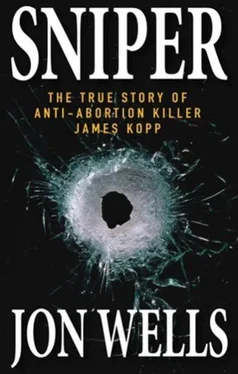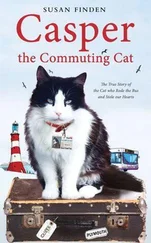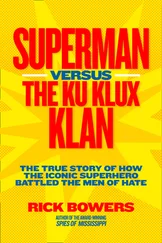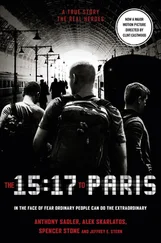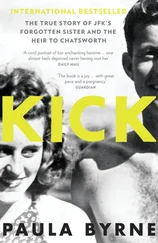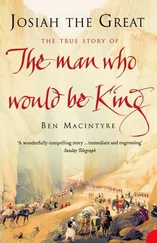“West Milford, New Jersey, is where her family is, Your Honor,” said Barket.
“Then she can go to New Jersey today. This court is adjourned.”
After paying their $100 fine, Marra and Malvasi were officially released. They walked out the front door of the Brooklyn courthouse arm in arm into sunshine and a warm breeze. Their skin looked even paler outside, Marra looked fragile. Reporters surrounded them. Loretta didn’t want any part of it. Malvasi didn’t shy away.
Dennis, do you think this experience will change you as far as your involvement in the anti-abortion movement goes?
“I am an abolitionist. I have never been a member of the antiabortion movement. So I don’t know what you’re talking about.”
Dennis, did you know that Kopp had killed Slepian when you invited him to stay at your apartment?
“With this one, I was actually minding my own business. I have never met James Kopp, I have never spoken to the man. One thing I know is, if my wife ever asks permission again for someone I don’t know to stay at our house, I’m going to say no.”
Dennis, was the murder of Barnett Slepian wrong?
“I don’t want to answer that. I’m on federal parole. You guys are asking me loaded questions.”
They started to move slowly away from the reporters. Among friends and family, Loretta Marra broke into a smile. She had delivered the speech of her life in court. Funny thing, though. Marra had gone to great lengths to prove to the judge that she was the one who had convinced Kopp to confess. He had done so in order to free her. But Judge Amon would have freed her anyway. Kopp’s confession was mostly irrelevant to the timing of Loretta’s release. A reporter asked Marra about that.
Loretta, given that the judge released you and said the confession had little impact on her decision, do you regret, now, having convinced your friend Jim to confess?
The pale green eyes stared unblinkingly, her face now showing color from the flush of the moment, the heat. Tiny beads of sweat had popped out on her forehead. “That’s a really good question,” she said. “I’ll have to think about that one for a while.”
Loretta, will you still take part in anti-abortion protests?
“I just want to get back to my kids.” Her kids. She had gone to Canada to give birth to both of her children. Why? She smiled at the question. “Yes, that’s true. They were born in Canada because—”
Bruce Barket cut her off in mid-sentence. “Ah-ah,” he said. “She’s not answering that.”
Loretta and Dennis walked away with friends and family, through a park and the shade thrown by towering trees. Celebrations would follow in the weeks to come, 150 pro-life friends would gather with the couple at a hall in New Jersey. But for now, a dozen family and friends gathered for lunch in the sun at a sidewalk café on nearby Chilton Avenue. It was wonderful, God smiling on them all. Louis, Loretta’s seven-year-old, found a five-dollar bill on the sidewalk, used it to buy his mom and dad their favorite candy bars. Dennis and Loretta still wore their prison attire, the baggy white shirts, scrubs, but their appearance turned no heads, not in New York City. They finally tasted decent sandwiches, pickles. Sipped some Sangria. As they walked away, Loretta stopped and gave Louis yet another hug. And then her other son, the four-year old, ran into her thin arms. He was born in 1999 when Jim Kopp was on the run. Loretta picked him up, held him high, looked into his eyes, joy rippling through her. He was her baby. She had named him James.
* * *
Buffalo Federal Detention Facility
Batavia, N.Y.
The scene is black and white, classic film noir, 1940s fedoras and trench coats. The movie was filmed in Jim Kopp’s old hometown, San Francisco, the action couched in fog and the dark corners of the Tenderloin district. In the final scene, hard-boiled detective Sam Spade, played by Humphrey Bogart, looks into the woman’s teary eyes. She had murdered Spade’s partner, tried to get away with it. And Spade had almost taken the rap for it—almost. And now he was confronting her.
Jim’s mind returned to the present. But not for long. Thoughts overwhelmed him at times, crowding his mind, bouncing between places and people and events he had known, common connections, books, songs, Bible verse, Mother Teresa, pre-born babies, his family, Mom, Dad, Anne, Marty, Mary, Walt. The garish pink walls of Mary’s bedroom where she taught him to read “Jack and the Beanstalk.” Back to the present, looking into the face of a visitor on the other side of the glass of the prison visitor’s booth. Picking up the black phone to speak to the visitor. Was the FBI listening today? Of course they were. He looked beyond the visitor’s face, into the corridor. Who is that woman walking around out there? She looks like a federal prosecutor. What was she doing here? He picked his glasses up off the table, pressed them to his face, trying to make her out. No. It wasn’t her.
The visitor mentioned Loretta Marra. Kopp had been overjoyed when he first heard that she had been freed in Brooklyn. Oh, to have been there to see it, he thought, to hear the music in the air—what a scene that must have been! As always, he was preoccupied by movies, novels. How would his own life, his story, unfold? What was the next twist, the next irony? And how would it end?
So many of his reference points were related to pop culture, Hollywood. He pointed out that Novato, a town north of where he had lived in California, was where his mother and sister and grandmother were buried—and was next door, practically, to filmmaker George Lucas’s Luke Skywalker Ranch. And the hospital where he was born, South Pasadena Hospital? That was where a scene from the movie Pay It Forward was filmed.
He loved Pay It Forward, which starred Helen Hunt and Kevin Spacey. He thought about it all the time. You have to see it, he urged. The film had polarized critics. Some applauded it as feel-good and well acted. Others ravaged it as sappy, sentimental and ultimately manipulative. The story is about a teacher who challenges his young students to come up with an idea that can change the world. It is meant as a motivational mental exercise. You can’t really change the world with an idea. Can you? But one boy, Trevor, takes the challenge seriously. He comes up with the “pay it forward” concept: he performs three acts of unsolicited kindness to three people, the only requirement being that each passes on the goodwill to three others. His teacher says it’s a utopian idea. But it catches on—all these disparate people, with no connection, suddenly coming together, and humanity is redeemed.
Jim Kopp thought of the movie as the story of his life. But why? Pay It Forward has a surprisingly dark ending. Trevor is famous, the movement spreads. One day, he comes to the aid of a smaller child who is being picked on by schoolyard bullies, and is himself stabbed to death. Cue the candlelit vigil, soft music. Kopp had always seen himself as a victim soul. Suffer for the cause, for God, die, painfully. But Kopp was now almost 50, and still alive. But for how long? He was certain he still might face execution. Impossible, wasn’t it? France and the United States had long ago signed the extradition deal in his case. There would be no death penalty. He grinned at that bit of conventional wisdom. His case was still wide open. The trial on the federal charges was still to come. They would make an example of him. He had seen this letter, signed by Jacques Chirac, the French president. Read it with his own eyes. It proved that nothing is in stone, and the needle was still on the table. He was sure of that.
But back to more immediate concerns. Goodness, how solitary confinement compressed his already busy mind, squeezed it all together! The federal trial was still weeks, months, away. And he did not want a date set any time soon. What was he planning to do at that trial? He had confessed already to shooting Dr. Slepian. But that meant nothing for the new trial. The government would need to prove his guilt all over again. Would federal prosecutors bring up his pattern of behavior to prove his crime? Not only had he shot Dr. Slepian, but he had very likely shot Dr. Hugh Short in Ancaster, had cased out the property at least a week in advance?
Читать дальше
